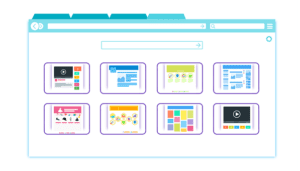Posts Tagged ‘business’

In today’s fast-paced digital landscape, where technology drives nearly every aspect of business operations, the question isn’t whether your company should embrace IT-managed services—it’s how soon you can get started. As organizations grapple with an ever-growing array of tech challenges and cybersecurity threats, relying on in-house solutions alone won’t cut it. Enter IT managed services: the game-changing approach that enables businesses to streamline their operations, boost productivity, and stay ahead of the competition. In this blog post, we’ll dive into why these services are not just a luxury but an essential ingredient for modern business success.
Cost-Effective and Predictable Budgeting
One of the biggest draws of IT-managed services is cost savings. Hiring and maintaining a full-time IT team can be expensive. Between salaries, benefits, and training, the costs add up quickly. With managed services, you get the support you need for a fixed monthly fee. This means no more surprise expenses when things break down, or you need a last-minute fix. Plus, you get access to top-tier expertise without the high price tag of a full-time IT department.
When considering the pros and cons of managed it services, the cost-effectiveness and predictability of budgeting are significant advantages. Managed services make budgeting easy, as you know exactly what your IT costs will be each month. This predictability is especially helpful for smaller businesses that might not have the budget flexibility to cover unexpected IT expenses.
24/7 Monitoring and Support
Tech problems don’t follow a 9-to-5 schedule. A glitch or security issue could happen at any time, and without the proper support, your business could face downtime, which means lost revenue. IT-managed service providers offer 24/7 monitoring and support, meaning experts constantly watch your systems. The best part? Many managed service providers catch issues before they even affect your operations. This proactive approach means fewer surprises and more time for you to focus on growing your business.
Better Security and Data Protection

Cybersecurity is a growing concern for businesses, especially as the threat landscape evolves. A single breach could risk your sensitive data, reputation, and customer trust. With managed IT services, you gain access to a team of security experts who constantly monitor for threats and ensure your business’s data stays safe. Managed services include regular updates, backups, and security protocols to protect against malware, ransomware, and other cyber threats. Plus, they’ll help you stay compliant with any industry regulations related to data security, giving you peace of mind that your business is protected on all fronts.
Scalability and Flexibility as Your Business Grows
As your business grows, so do your tech needs. Managing an expanding network with more users and significant data storage requirements can quickly become overwhelming. One of the key advantages of IT-managed services is scalability. Whether you need more bandwidth, additional storage, or software updates, your provider can quickly scale up your services to meet your evolving needs. This flexibility means you don’t have to worry about constantly upgrading your tech infrastructure or dealing with growing pains. Your managed service provider ensures everything keeps running smoothly as your business expands.
Access to Expertise Without the Headaches

Technology is complex, and trying to stay on top of all the latest trends and tools can be a full-time job on its own. When you work with an IT-managed services provider, you get access to a team of experts on the cutting edge of technology. They can guide you through upgrades, recommend the best solutions for your business, and help optimize your systems for better efficiency. Rather than spending hours trying to troubleshoot issues or research the best tech solutions, you can rely on professionals who know the ins and outs of the industry. This expertise saves you time and ensures you’re always using the most effective and secure technology.
Firm Focus on Your Core Business Activities
When your IT systems are in the hands of professionals, you and your team can focus on what matters most—your business. Without worrying about tech problems or system maintenance, you can concentrate on serving your customers, improving your products, and growing your brand. This freedom can be incredibly valuable for small businesses and startups that must use their time and resources wisely. Letting someone else handle the tech side of things means you can put your energy into the parts of your business that will drive growth and success.
In today’s fast-paced, tech-driven world, IT is no longer just a support function—it’s a critical part of your business’s success. IT-managed services provide the expertise, support, and security needed to ensure that your systems run smoothly and that your business is always one step ahead of potential issues. Whether you’re looking to save money, improve security, or eliminate the stress of managing IT alone, outsourcing your tech needs can be the perfect solution.…

Cloud computing is an internet-based computing which provides shared computing data and computer resources to other devices and computers on demand. This model enables ubiquitous and on-demand access to the shared pool of computing resources which are configured together. Such resources include the computer networks, storage, servers, services, and applications. The various computing resources can be provisioned and released rapidly with very little management effort.
It is practically impossible for businesses to operate smoothly without having to invest in technological information. There are different forms of information technology facets which could be synergized for improving capacity. Cloud computing platform allows the provision of services by business owners as well as cutting down on the infrastructure expenses.
The following are the main characteristics of cloud computing.
Scalability
Most of the cloud computing services are scalable. This is very beneficial, especially where additional features are needed. For instance, you can scale up your system to accommodate the extra data storage capacity and bandwidth. This goes along way with cutting down the extra cost that would have been used in purchasing and installation of the additional infrastructure.
Multiple user tenancy
The various resources can be shared easily among the different users without any negative impact on the performance. This makes it easier for both the consumer and the service provider to utilize the efficiency of the system better.
Usage-based billing
Cloud computing enables the business owner to cut down the running cost. This helps in improving the profits significantly. The system is consumer based and therefore the consumers just pay for the resources and services which they have used.
Broad network access
Cloud computing services are readily available by use the standard Internet protocol technology. This helps to increase accessibility without having to add any expenses on infrastructure.
Dynamic computing infrastructure
The service providers should rollout a vibrant infrastructure to cope with the consumer’s demands which always keep on varying. This might include the allocation of automated service workload. Cloud computing enables you to monitor the systems’ performance closely and efficiently.
Robust IT integration
Most businesses prefer the use of service centered models. In some cases, you may not require to set up your system as well as the network administration. This would help in making the business tasks easier.
Better business data security
Most of the businesses have lost their valuable data to hackers. This has forced many businesses to invest in expensive security solutions to safeguard their data. The use of cloud computing reduces the risks associated with data loss dramatically by securing the consumer’s data.
businesses have lost their valuable data to hackers. This has forced many businesses to invest in expensive security solutions to safeguard their data. The use of cloud computing reduces the risks associated with data loss dramatically by securing the consumer’s data.
Reliability
Those businesses that depend on the on-site systems might suffer substantial losses in case of any breakdown or malfunctioning. However, cloud computing has the capacity of leveraging multiple site advantages thus offering the same quality services even when some of the sites suffers a major breakdown.
…

The design for a business website application is often neglected. Therefore, most of the applications fail to meet the user’s or businesses needs. This might contribute to poor user experience or loss of profits.
Here are some of the valuable tips will help you to design a great website application.
Clear primary action
Most of the data entry form have at least two buttons which you can use for closing the form. One of the buttons is used for saving the data while the other one can be used for closing the form without saving. You can also have another button for blanking all the fields.
Two different buttons can be utilized for saving data, one for submitting the data and one for saving and returning later. However, is very critical for the users to understand how the primary button can be highlighted for completing their request.
For instance, the two saving options that are in bold would complete the form. They should, therefore, stand out clearly to the user.
- Cancelling
- Resetting the form
- Saving and then continue
- Finally, save and complete
Identification of the required fields
Sometimes upon entering the minimum information that might be necessary for a certain form, you are told that some have been left blank. A good example is phone numbers. Why do some companies require both the phone number and the email address as well?
You should be in a position to identify all the required field when completing the form.
Complete steps of the multi-tabbed forms
Forms having many fields that need to be completed might be broken down into groups that will be shown on different tabs. The separate tabs make the form clearer and also helps in guiding the user about the order to be followed when completing the forms.
to be completed might be broken down into groups that will be shown on different tabs. The separate tabs make the form clearer and also helps in guiding the user about the order to be followed when completing the forms.
Disclose the information gradually
Users should not be loaded with too much information on your website, especially during the first visit. This can be done by having minimal information on the landing or home page. Links should be provided to the users who may require more information.
Lazy registration you should relax the need for registering new visitors. This gives them ample time for trying out some important features before they sign up to reveal their identity.
Clear subscription plans
Any signup/subscription plans should be made clear for the users to understand. A good plan helps to improve the overall branding of your website.
Forgiving form validation
Avoid penalizing your users for either failing to enter or not entering data. You should avoid blanking all the fields as this may lead to omissions when the users are filling the forms. Subjecting the users to some terms and conditions when they are re-entering the fields could be very frustrating.
Breadcrumbs and navigation
A breadcrumb trail should be provided in every website. It helps to show all the pages visited by the user. This prevents them from feeling disoriented or lost when they visit your website.…





 businesses have lost their valuable data to hackers. This has forced many businesses to invest in expensive security solutions to safeguard their data. The use of cloud computing reduces the risks associated with data loss dramatically by securing the consumer’s data.
businesses have lost their valuable data to hackers. This has forced many businesses to invest in expensive security solutions to safeguard their data. The use of cloud computing reduces the risks associated with data loss dramatically by securing the consumer’s data.
 to be completed might be broken down into groups that will be shown on different tabs. The separate tabs make the form clearer and also helps in guiding the user about the order to be followed when completing the forms.
to be completed might be broken down into groups that will be shown on different tabs. The separate tabs make the form clearer and also helps in guiding the user about the order to be followed when completing the forms.